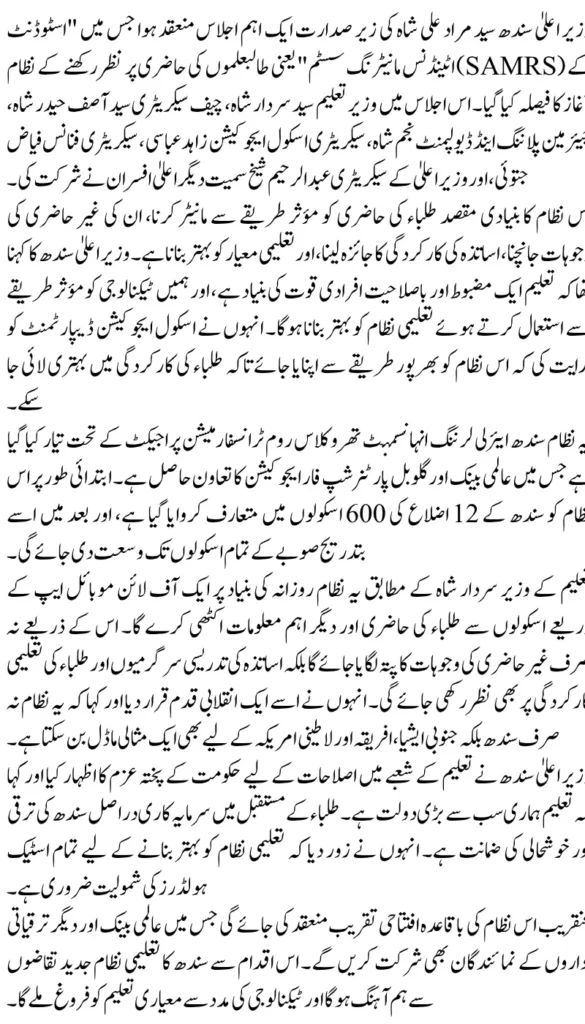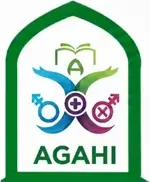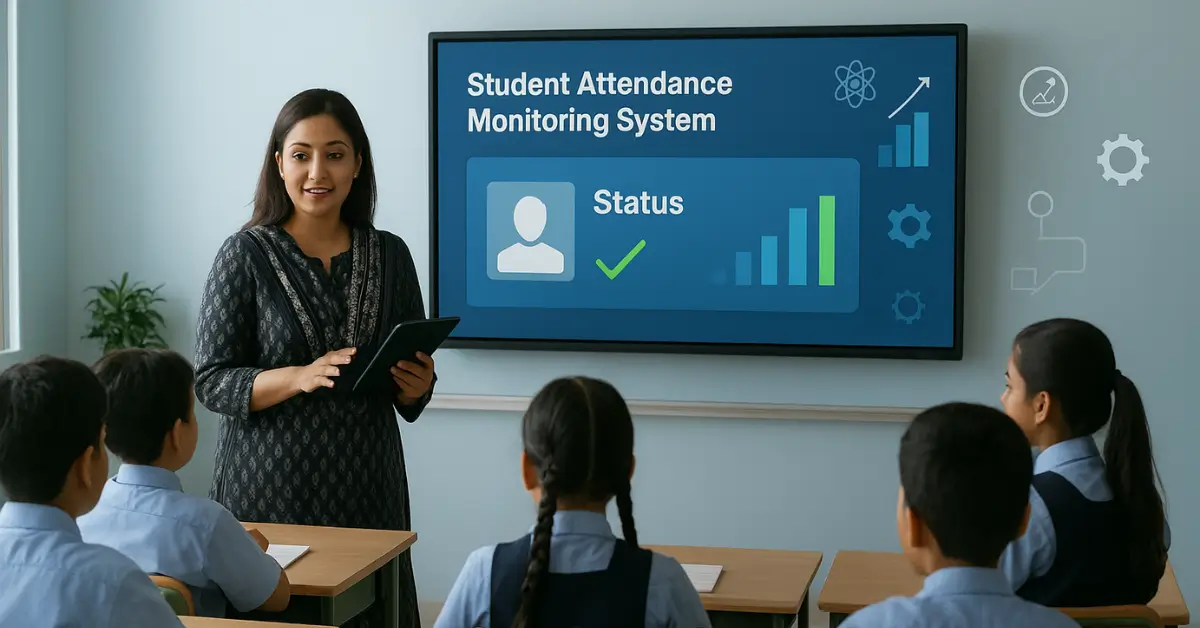Student Attendance Monitoring System (SAMRS)
The Government of Sindh has taken a major step to improve the quality of education by launching a new Student Attendance Monitoring System (SAMRS). Chief Minister Sindh Syed Murad Ali Shah chaired an important meeting where this initiative was officially introduced. The meeting focused on how technology can play a key role in ensuring students attend school regularly, teachers perform effectively, and schools deliver better education.
High-Level Meeting on SAMRS
The meeting was attended by several senior officials, including:
- Education Minister Syed Sardar Shah
- Chief Secretary Syed Asif Haider Shah
- Chairman P&D Najam Shah
- Secretary, School Education, Zahid Abbasi
- Secretary Finance Fayyaz Jatoi
- Secretary to CM Abdul Rahim Sheik, among others.
These officials came together to discuss the launch and implementation of the Student Attendance Monitoring System (SAMRS) as a transformative project for Sindh’s schools.
What is SAMRS?
The Student Attendance Monitoring System (SAMRS) is a digital solution that will track student attendance daily through a mobile app, even when the internet is not available. This system is designed to:
- Identify why students are absent
- Monitor teacher performance
- Improve academic outcomes
- Reduce student dropout rates
- Use real-time data for better decision-making
A Technology-Based Educational Reform
Chief Minister Murad Ali Shah stressed that education is the foundation of a skilled and prosperous society. He emphasized the importance of using technology to solve problems in the education sector.
“Education is our biggest asset. Investing in students is investing in the future of Sindh,” CM Murad Ali Shah
The CM also directed the School Education Department to adopt such technologies on a wider scale to address key challenges in education.

Supported by International Organizations
The SAMRS project has been developed under the Sindh Early Learning Enhancement Through Classroom Transformation Project. It is supported by international partners like:
- The World Bank
- The Global Partnership for Education
Their technical and financial support has helped make SAMRS a reality.
ICAO Honors Pakistan’s Aviation Sector with Prestigious Council President Certificate
Pilot Launch in 600 Schools
Initially, the SAMRS system was launched in 600 schools across 12 districts in Sindh. These include both urban and rural schools, allowing for a comprehensive test of the system in different environments.
The government plans to expand this system in phases until it covers all schools in Sindh.
How SAMRS Works
According to Education Minister Syed Sardar Shah, the system will:
- Record daily attendance using an offline mobile app
- Provide data for analyzing student and teacher performance
- Help identify and resolve issues in teaching
- Improve overall school management
He called it a revolutionary step and said this model could inspire other regions in South Asia, Africa, and Latin America.
Formal Launch and Global Recognition
A provincial-level launch ceremony will be held soon, where representatives from the World Bank and other development partners will participate. The Sindh government believes that SAMRS can become a global model for education systems in developing countries.
Smart Tolling Revolution: Punjab Embraces Digital Infrastructure Upgrade Across Highways
A Strong Commitment to Education
Throughout the meeting, Chief Minister Murad Ali Shah and other officials highlighted the government’s strong commitment to education reforms.
“All stakeholders must be involved in making the education system better,” CM Sindh
They believe that effective monitoring, combined with data-driven policy-making, will bring long-term improvements to the education sector.

